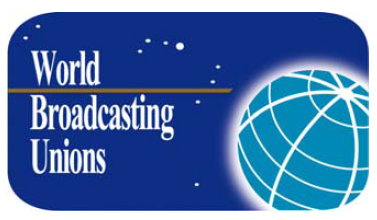
Delegates from the world’s eight Broadcasting Unions have taken a step forward in agreeing a common view on Spectrum retention for broadcasting. The World Broadcasting Unions Technical Committee* (WBU-TC) discussed the issue in a meeting alongside the EBU Technical Assembly in Prague this week.
Finding a common view has proved difficult because the rules for the use of the radio spectrum are different in different regions of the world. A joint position has yet to be agreed by the regional unions, but essentially all are agreed that, in the public interest, the current rules for the part of the broadcast band below 698MHz and for ‘C-band’ should remain unchanged.
This will mean a fair share of the broadcast bands will still be available for broadcasting and contribution circuits in the years ahead. The ITU World Radio Conference in 2015 will be decisive for the future of terrestrial television broadcasting. The future of the radio spectrum used today for analogue and digital television broadcasting will be decided then, as governments of some countries attempt to change the way the band is used in future to include yet more IMT (International Mobile Telecommunications) services. These would mostly be wireless broadband internet.

The WBU-TC members are worried that the potential further loss of spectrum for television broadcasting will cause serious problems for many broadcasters. They say that any further loss would limit the broadcasters’ ability to evolve both in terms of content and the quality of transmission. The WBU-TC also believes there would be unwanted economic and social consequences if free to air broadcasting becomes severely limited.
* The WBU-TC is the collective technical body of the world’s eight Broadcasting Unions.
